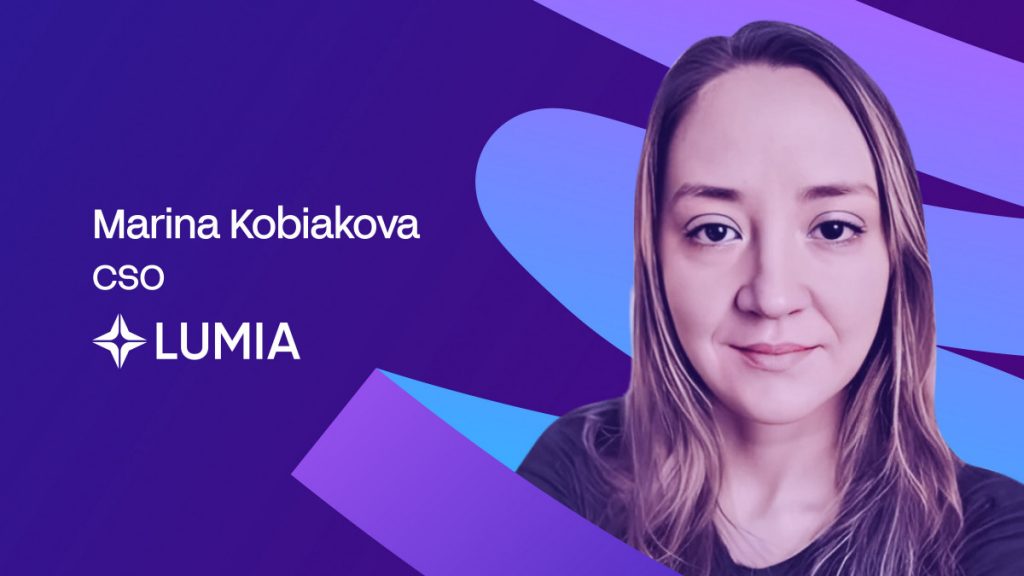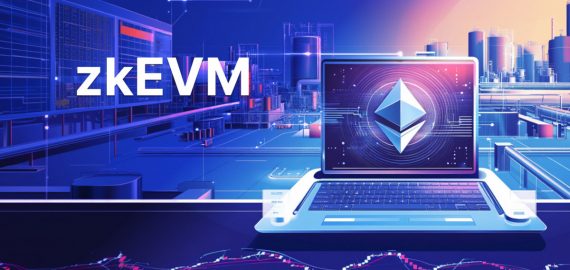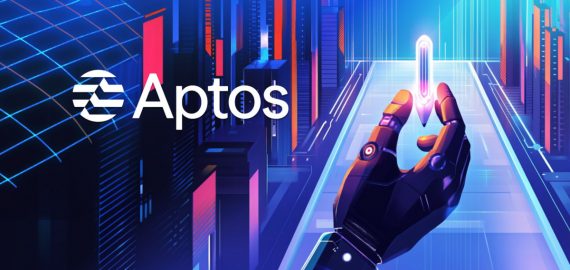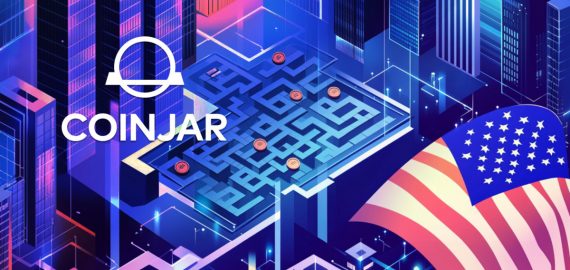How Lumia Is Turning Real Assets into DeFi Powerhouses


In Brief
Lumia is integrating regulatory precision with composable DeFi utility, partnering with sovereign entities, and bringing trillions in value on-chain, aiming to transform finance into a coded protocol.

What if the future of finance wasn’t built in boardrooms, but coded into protocols? What if real-world assets—buildings, commodities, intellectual property—could flow through DeFi rails as easily as stablecoins do today? These are the questions Lumia is not just asking, but actively answering.
In this interview, Marina Kobiakova, CSO at Lumia, unpacks how Lumia is merging regulatory precision with composable DeFi utility, why partnerships with sovereign entities matter, and what it really takes to bring trillions in value on-chain.
Can you elaborate on how Lumia’s infrastructure supports the entire life cycle of RWAs, from tokenization to DeFi integration?
Lumia provides comprehensive infrastructure that covers the full life cycle of RWAs, starting from secure and transparent tokenization via Lumia Hub, supported by real-time proof-of-reserve, zk-databases, and robust legal frameworks, through to complete DeFi integration.
Unlike traditional RWA chains that limit functionality to basic token transfers, Lumia transforms tokenized assets into composable DeFi instruments, enabling lending, borrowing, leveraging, and active market creation, thus unlocking their full potential in a decentralized economy.
What types of real-world assets are currently being tokenized on Lumia, and what criteria are used for selection?
We are currently starting with real estate assets, notably the Lumia Towers in Istanbul. At the same time, we are actively working to tokenize other asset classes, including intellectual properties (IPs), commodities, and traditional financial instruments. Our primary selection criterion is identifying assets that benefit the most from the enhanced liquidity and composability Lumia’s infrastructure provides.
What are the primary benefits of tokenizing RWAs compared to traditional methods of securitization or asset management?
The primary benefits of tokenizing RWAs compared to traditional securitization or asset management methods include enhanced liquidity, as tokenization opens traditionally illiquid markets and allows assets to be traded seamlessly in decentralized marketplaces; accessibility and democratization, as fractional ownership lowers entry barriers and enables broader investor participation.
Transparency and security, since blockchain technology provides real-time proof-of-reserves, immutable records, and improved transparency; DeFi composability, because tokenized RWAs can be leveraged, borrowed, or integrated into innovative decentralized financial products, unlocking additional value and use cases; and cost efficiency, with reduced operational overheads through automation and simplified settlement processes compared to traditional financial systems.
How does Lumia ensure compliance with global financial regulations while dealing with RWAs?
Lumia combines automated infrastructure with expert oversight to stay ahead of the regulatory curve. On the technical side, we integrate compliance-focused service providers and decentralized identity protocols like Polygon ID to handle KYC, KYB, proof-of-reserve, and credential verification in a privacy-preserving, programmable way. We also apply AI-driven monitoring to flag discrepancies and track evolving jurisdictional requirements, reducing the overhead of manual compliance while improving accuracy and responsiveness.
But technology alone isn’t enough. Lumia is supported by a core legal team and a global legal advisory board that guides our approach across different regulatory environments—from MiCA in the EU to pending frameworks in the U.S. and Asia. Together, this mix of automation, integration, and expert review enables us to responsibly scale RWA access while aligning with institutional standards.
How does Lumia ensure the security and authenticity of tokenized assets on its platform?
Lumia has a rigorous process to ensure that any asset issuer provides a wide range of data to verify the asset itself and ownership. The list of documents/actions that MUST be adhered to prior to the tokenization event includes KYB, KYC, incorporation documents, proof of reserve, proof of ownership, and proof of shareholders. Thereon, we have audits and proof-of-reserves audit posts on-chain every quarter. All asset prices are linked to a given oracle price feed secured by Blocksense, API3, or Chainsight.
How does Lumia’s AI-driven yield management optimize rewards through staking and yield farming?
At a high level, Lumia’s AI-powered system is built to help users get the most out of their assets without having to constantly monitor the market. It uses zero-knowledge machine learning (zkML) to scan real-time conditions, like where liquidity is moving, how yields are shifting, and what the risks look like and then adjusts strategies accordingly. Our team is constantly refining the models and infrastructure behind Lumia’s AI-driven yield system to keep up with fast-moving market conditions.
What partnerships has Lumia formed to strengthen its position in the RWA sector, and how do these collaborations benefit users?
Lumia’s mission is to tokenize everything and bring it on-chain, giving users access to a diverse and rapidly growing universe of tokenized assets. To achieve that, we are building a cross-sector foundation with real estate developers, sovereign partners, DeFi infrastructure leaders, and major technology providers. These partnerships are designed to deliver real liquidity, regulatory alignment, and global accessibility.
We’ve launched a $1B real estate tokenization initiative, anchored by Lumia Towers in Istanbul—one of the world’s first real estate developments both built and tokenized by a Web3-native company. This project embodies our full-cycle vision of blockchain-based ownership and liquidity, while also pushing its boundaries into physical construction.
Alongside this, we are collaborating with governments to shape national tokenization frameworks and expanding into the U.S. market through strategic public-sector engagement. On the infrastructure side, Lumia integrates decentralized identity, pricing, and compliance systems directly into its core architecture, ensuring that tokenized assets are accessible, verifiable, and DeFi-ready across multiple ecosystems.
Can you discuss the importance of integrating with major CEXs, DEXs, and aggregators for Lumia’s growth?
CEXs and DEXs drive liquidity and opportunity in the space. We believe it is paramount to integrate these systems and allow LPs to take position in RWAs beyond simple trading avenues to earn a yield. RWAs need these opportunities and liquidity to enhance its utility on-chain and more utility on-chain more likelihood of being integrated into DeFi thus having in-flow of capital. We have to build opportunities and vehicles around RWAs, integration of CEX/DEX is paramount to achieving this goal.
How does Lumia plan to scale its operations to accommodate the anticipated growth in the RWA market?
We are chasing several licenses and opportunities with sovereign states to tokenize assets at a large scale and bring utilities to the otherwise idle and non-liquid assets. We are growing and enhancing our Lumia Stream liquidity network to align the liquidity layer with upcoming opportunities on-chain.
This allows us to scale our liquidity requirements by opening LP service to anyone willing to do KYC at the same time build DeFi utilities around incoming RWAs on Lumia. We continue to push the boundaries around utility for RWA tokens as this is a key role in bringing billions of dollars on-chain.
What are the key milestones in Lumia’s roadmap for this year?
End of Q2 we want to achieve the zkProver Network which will allow us to decentralize our zk proving capabilities. Following zkProver our next foal is to decentralize our DA efforts. We are looking at early Q3 to plug and play against AvailDA and allow anyone with “node sale” NFT to stake and verify data for the Lumia chain, again democratising the chain further.
Following DA, by the end of Q3 we are looking to decentralize shared sequencers. As with any L2 we started with a centralized sequencer but to become a truly “stage 2” roll-up we have decentralized this component. Lastly, for Q4 we want to speed up block down from current 3 secs to 250ms to achieve quick and responsive UX on Lumia itself.
What specific industries or sectors do you see as the most promising for RWA tokenization in the near future?
We see real estate, private credit, commodities, bonds, and minerals as the most promising sectors for RWA tokenization. These markets are traditionally illiquid and fragmented, so tokenization can unlock new liquidity, improve access, and create more flexible investment opportunities.
Disclaimer
In line with the Trust Project guidelines, please note that the information provided on this page is not intended to be and should not be interpreted as legal, tax, investment, financial, or any other form of advice. It is important to only invest what you can afford to lose and to seek independent financial advice if you have any doubts. For further information, we suggest referring to the terms and conditions as well as the help and support pages provided by the issuer or advertiser. MetaversePost is committed to accurate, unbiased reporting, but market conditions are subject to change without notice.
About The Author
Victoria is a writer on a variety of technology topics including Web3.0, AI and cryptocurrencies. Her extensive experience allows her to write insightful articles for the wider audience.
More articles

Victoria is a writer on a variety of technology topics including Web3.0, AI and cryptocurrencies. Her extensive experience allows her to write insightful articles for the wider audience.

















































